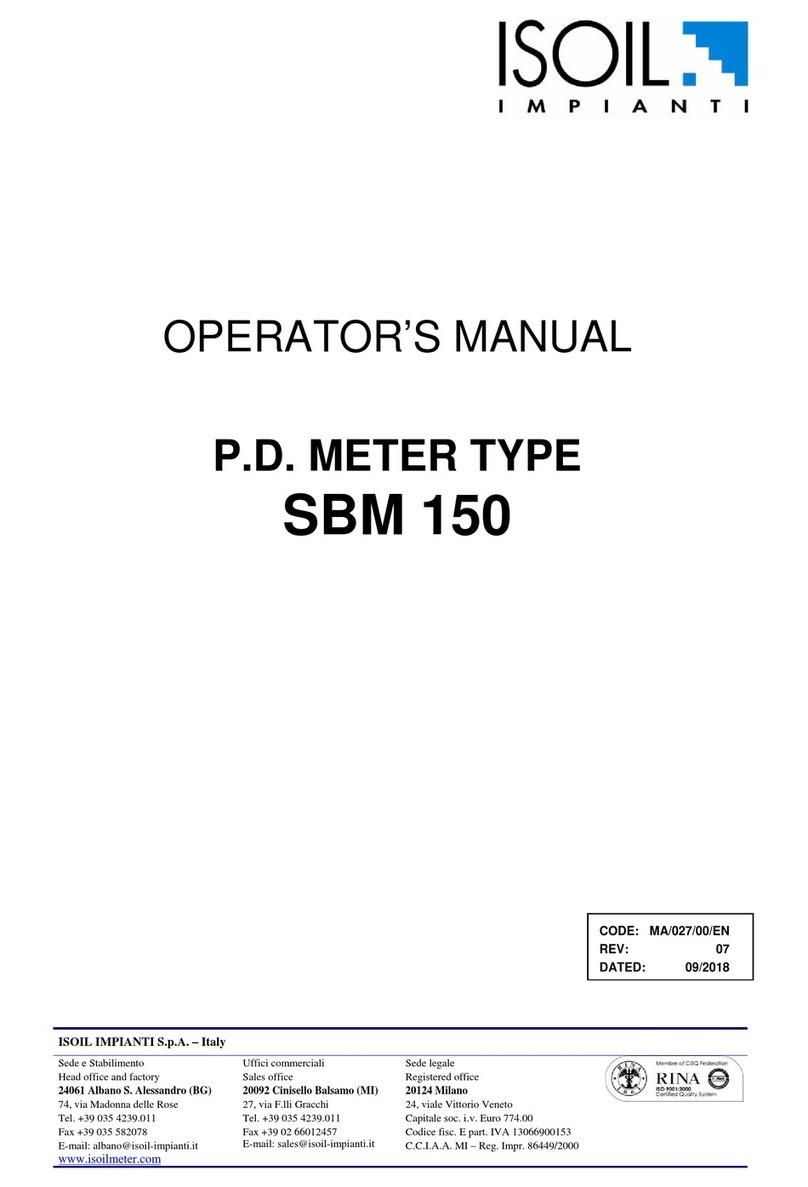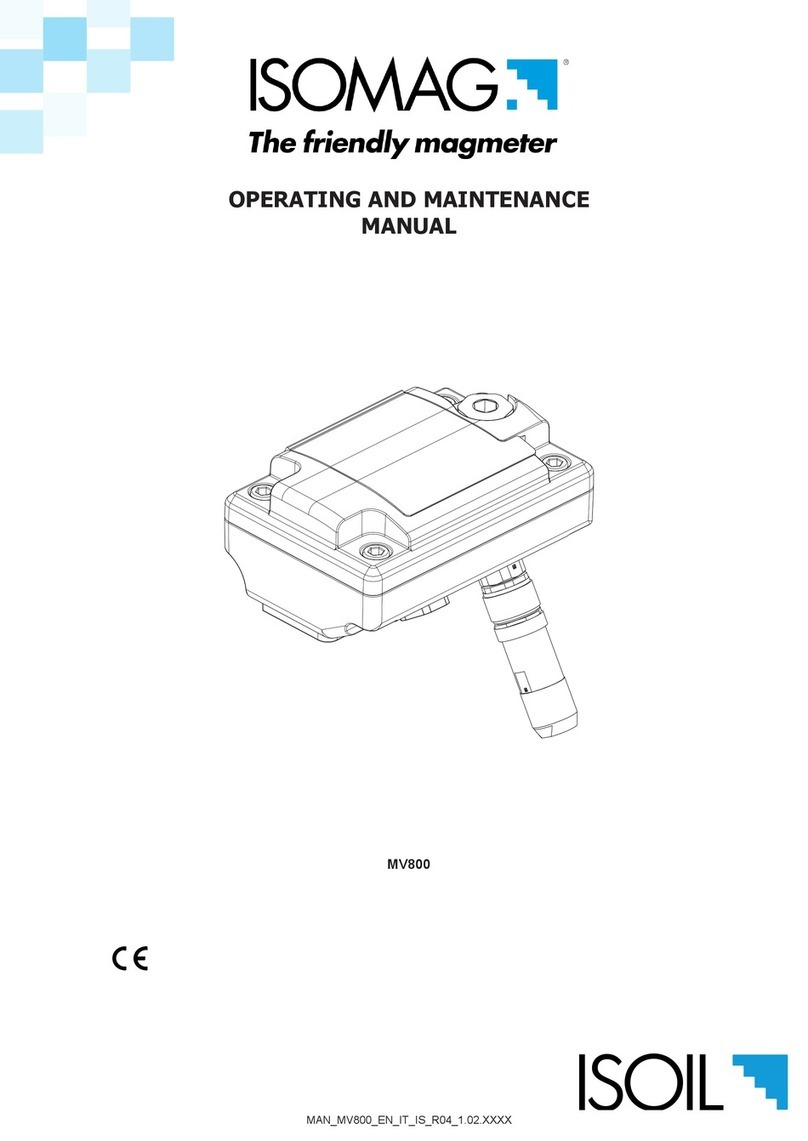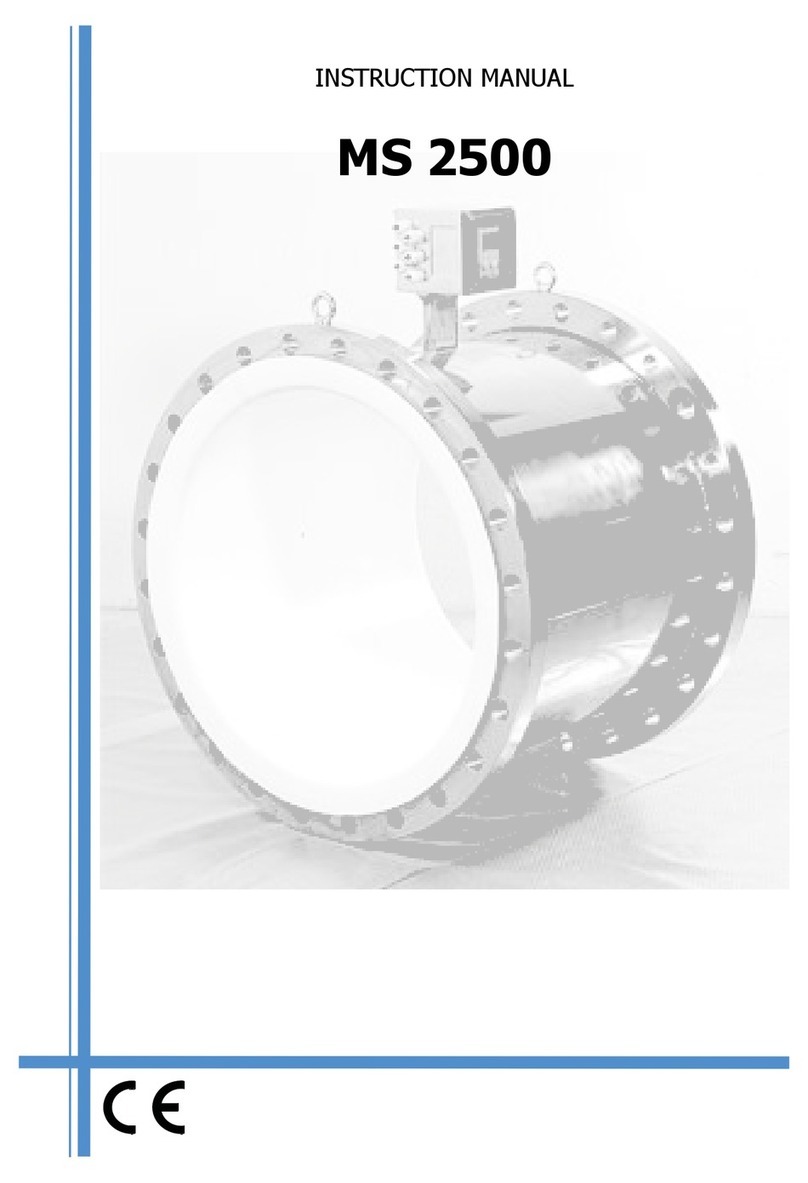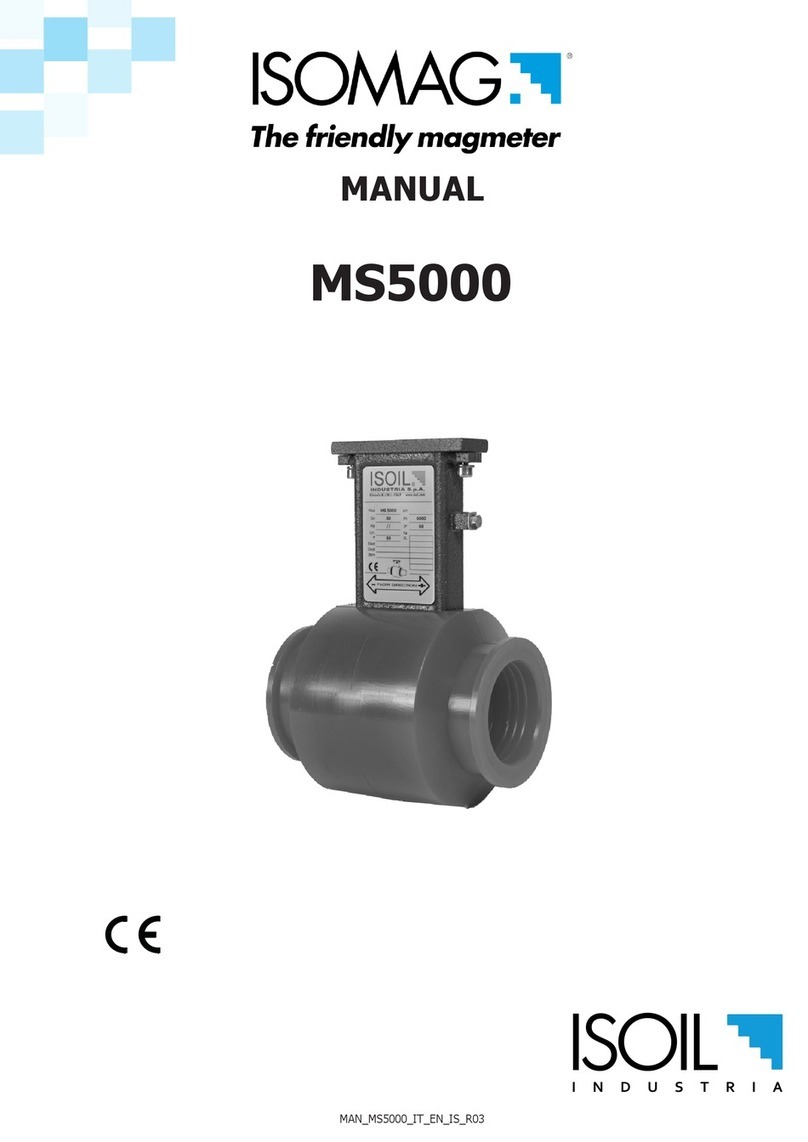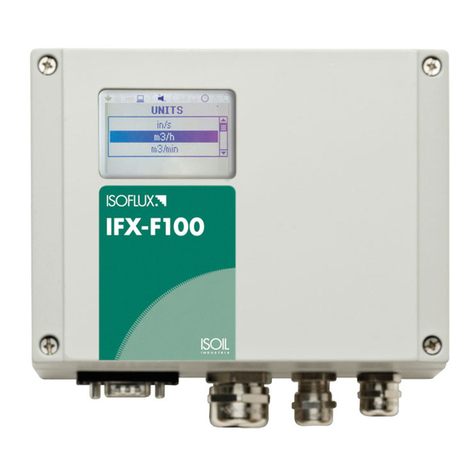
Page 6 Isoil impianti SpA
Code MA/038/00/EN/03 All rights reserved. Reproduction of this manual is forbidden
adequately trained personnel.
•The meter must be used for the purpose it is made for; the manufacturer is not
responsible for any damage deriving from uses outside of the original purposes.
•The meter must be operated inside the limits fixed by the manufacturer; the
manufacturer is not responsible for any damage deriving from uses outside of the
operational limits of the device.
2.3 Instructions for the operator
•The operator must adhere to safety and accident-prevention standards currently in
force in the country where the device is installed.
•The operator must not, by his own initiative, carry out any operation that is outside his
competence.
•The operator must carefully comply with hazard and/or prohibition instructions
contained in this manual.
•Do not use petrol, solvents or other flammable substances to clean parts. Use only
approved commercial solvents that are non-flammable and non-toxic.
2.4 Servicing instructions
•Never carry out any maintenance, servicing or regulation before having closed the
root valve, discharged the pressure from the system and disconnected the power
supply to any electrical device (if present), unless explicitly stated otherwise.
•Read carefully the rating plates on the individual equipment.
•All maintenance operations, either ordinary or extraordinary, must be done by
authorised and trained personnel.
•The maintenance operator must wear clothes adequate to the working environment
and to the situation; in particular, loose or voluminous clothes, chains, bracelets, rings,
earrings or anything that might get caught in the mechanical parts of the system
should be avoided.
•The maintenance operator must wear adequate protective devices in accordance with
safety and accident-prevention regulations.
•In explosive environments use only antisparking equipment.
•If the meter is connected to any electric or electronic equipment, disconnect all of
them from the power supply before doing any servicing or regulation operation, unless
explicitly stated otherwise in the manual.
2.5 Operating precautions
•The meter must be calibrated following the instructions reported into the operator's
manual and in what stated into the Manual of Petroleum Measurement Standards
(API) with particular attention to the following chapters:
- Chapter 4: proving systems
- Chapter 5: metering
- Chapter 6: metering assemblies
- Chapter 11 section 2.3: water calibration of volumetric provers
- Chapter 12 section 2: calculation of petroleum quantities
•The meter must always remain full of product; to achieve this, it is suggested to install
the meter so that it remains below the main line.

